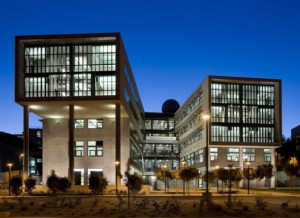 Intel has opened a second parallel computing center at the San Diego Supercomputer Center (SDSC), at the University of California, San Diego. The focus of this new engagement is on earthquake research, including detailed computer simulations of major seismic activity that can be used to better inform and assist disaster recovery and relief efforts.
Intel has opened a second parallel computing center at the San Diego Supercomputer Center (SDSC), at the University of California, San Diego. The focus of this new engagement is on earthquake research, including detailed computer simulations of major seismic activity that can be used to better inform and assist disaster recovery and relief efforts.
Intel is pleased to collaborate with SDSC in geosciences to help extract the full capability of modern parallel CPUs in wave propagation applications as used in earthquake simulation,” said Joseph Curley, senior director, HPC Platform and Ecosystem Enabling at Intel Corporation. “By fully exploiting the capabilities of modern CPU technology like the Intel Xeon and Intel Xeon Phi processors, we hope that a greater number of geoscientists will be able to improve their time to results, utilize increased model sizes, and provide a more precise understanding of seismic ground motion to help our society prepare for the next ‘Big One’.”
The new Intel Parallel Computing Center (Intel PCC) continues an interdisciplinary collaboration between SDSC and the Southern California Earthquake Center (SCEC), one of the largest open research collaborations in geoscience. In addition to UC San Diego, the new PCC includes researchers from the University of Southern California (USC), San Diego State University (SDSU), and the University of California, Riverside (UCR).
The Intel PCC program provides funding to universities, institutions, and research labs for modernizing key community computer codes used across a wide range of disciplines to run on current industry-standard parallel architectures. In September 2014, SDSC and Intel announced SDSC’s first such center, focused on improving the parallelism, efficiency, and scalability of widely used molecular and neurological simulation technologies.

An image from an animation of wave propagation during a magnitude-7.8 earthquake rupturing the San Andreas Fault from northeast to southwest. Red-blue colors reflect the intensity of shaking; green colors indicate areas of permanent ground deformation. Simulation by Daniel Roten, Kim Olsen, and Steven Day at the Department of Geological Sciences at San Diego State University, and Yifeng Cui at the San Diego Supercomputer Center. Visualization by Daniel Roten (SDSU). Simulation on UIUC Blue Waters.
The Intel PCC at SDSC for Earthquake Simulation will be an interdisciplinary research center with the goal of modernizing SCEC’s highly scalable 3D earthquake modeling environment, called AWP-ODC. The modernizations will leverage the latest multi-core Intel Xeon processors and many-core, self-hosted, next-generation Intel Xeon Phi processors architecture.
These are exciting times for computational seismology, as Intel’s new technology and this additional support will help accelerate earthquake modeling research,” said Yifeng Cui, director of the High Performance GeoComputing Laboratory at SDSC. Cui also is an adjunct professor with SDSU, and Principal Investigator for the new Intel PCC at SDSC.
California comprises about three-quarters of the nation’s long-term earthquake risk, and Southern California accounts for nearly 50 percent of the national annualized earthquake loss, according to Federal Emergency Management Agency (FEMA) data. An animation done by Cui and his associates of a magnitude 7.8 earthquake simulation on the San Andreas Fault can be viewed below.
The primary goal of the software development is to integrate the modernized code elements into a software ecosystem used by SCEC for production size of physics-based seismic hazard analysis in the U.S. and elsewhere,” noted Cui.
“Realistic, physics-based earthquake ground motion computational models can help key decision-makers identify effective ways to reduce seismic risk,” said Thomas Jordan, project co-Principle Investigator and SCEC Director. “This new partnership with Intel provides us the opportunity to substantially broaden the frequency band covered by such detailed simulations, allowing researchers to predict ground motions at frequencies relevant for common dwellings.”
Other members of the SDSC’s new Intel PCC include Alexander Breuer (SDSC), Daniel Roten (SDSU), and Jeffrey Chen (UCR).
Sign up for our insideHPC Newsletter



